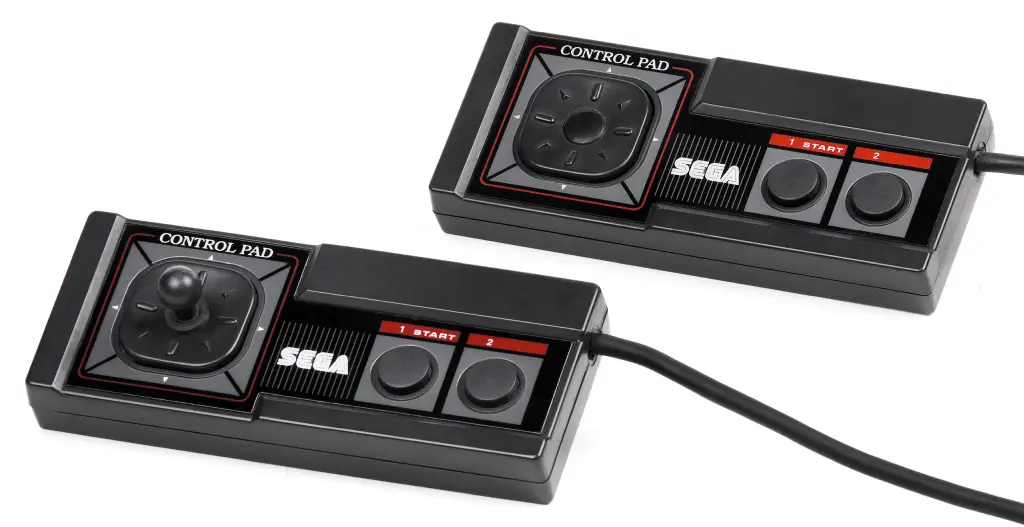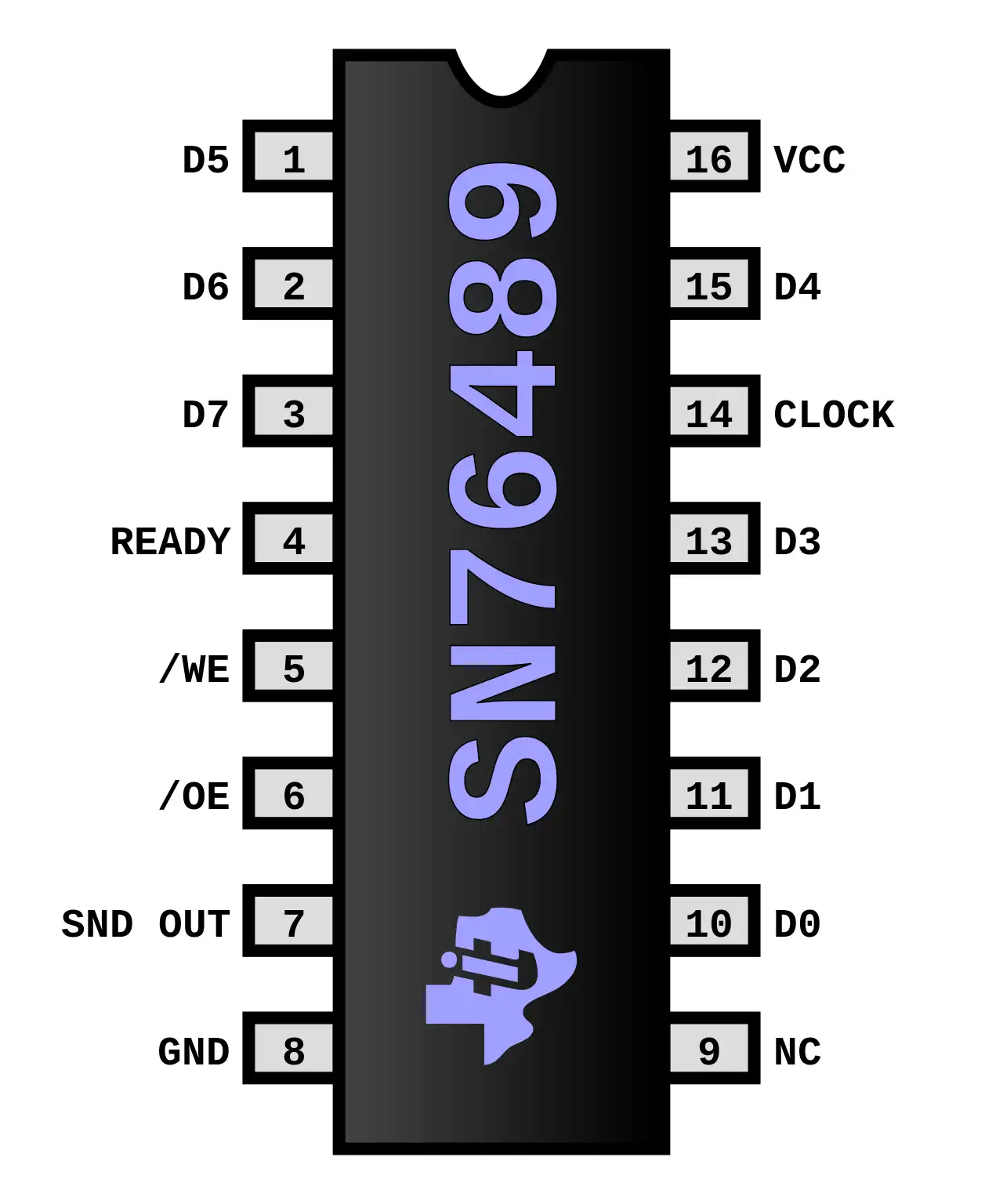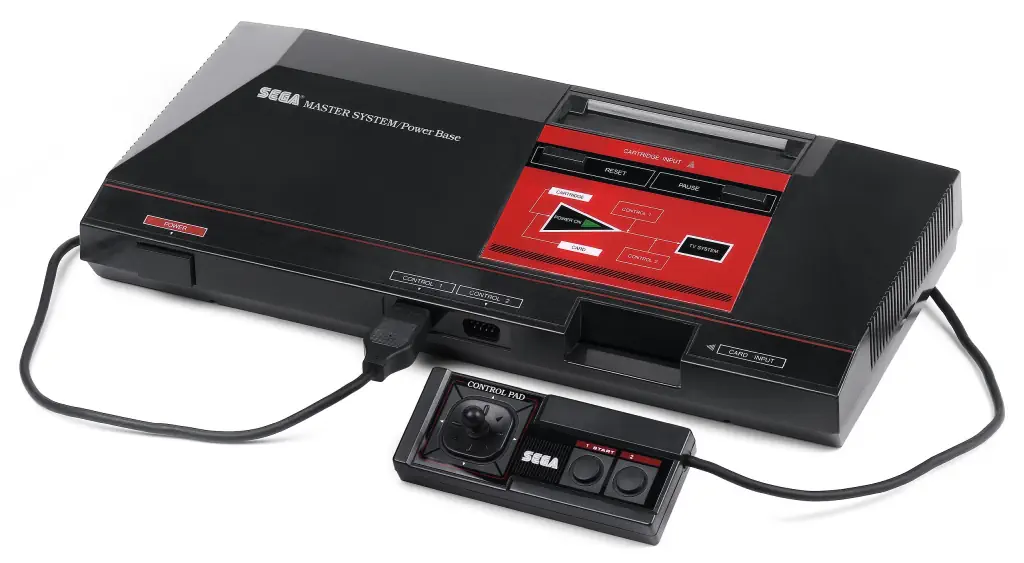Mark III / Sega Master System
The Mark III/Master System had a custom developed Video Display Processor that could display 32 color simultaneously out of a palette of 64. It also had a SN76489 PSG chip built in, and was combined with an external YM2413 FM synthesizer chip for superior sound quality.
The Mark III was designed by the same team that designed the SG-1000. The team included Hideki Sato, and Masami Ishikawa. The Mark III was designed to overcome the limitations of the TMS9918 VDP that was used in the SG-1000 and the II. This chip was also used in many other systems at the time, including the MSX line of home computers. The biggest challenge was the lack of multi-color sprites and a fixed palette of 16 colors. The new custom built Sega System 2 VDP featured 32 colors on-screen out of a palette of 64. The new VDP used a single sprite layer, but could (unlike the NES/Famicom), use 16 colors on any sprite, with one color reserved for transparency. Sprites were 8x8 pixels large, and the VDP could display 64 sprites simultaneously without any flicker. Due to the limited 16K VRAM, the use of more sprites would limit the ability to store background tiles, which also were 8x8 pixels. The system could store a total of 448 8x8 tiles, and any of those could be used as background or sprite tile. More sprites meant less background tiles and vice versa. The VDP was not able to flip sprites, like the NES could do, so more sprites were needed for certain graphical animations. However a tile could be displayed as a sprite tile on the sprite layer, and also on the background layer, making it possible to have a sprite present as non-animated tile as well.
Another new graphical capability was that the new VDP could split the screen horizontally at any given scanline, so that each portion of the split could be independently scrolled. Many games used this to move large boss enemies around, much bigger than would be possible with just sprites.
Light Gun for the Sega Master System

Master System Controllers

3D Glasses

Texas Instruments SN76489 Sound Generator
THe SN76489 Digital Complex Sound Generator (DCSG) is a TTL compatible programmable sound generator chip created by Texas Instruments. It main application was the generation of music and sound effects in home computers, arcade machines and home game consoles. Functionally the chip was similar to the General Instrument AY-3-8910.
SOund Capabilities:
- 3 Square Wave tone generators, 16 volume levels
- 1 White Noise Generator (white and periodic noice, 3 frequencies, 16 volumes)
The SN76489 Was originally designed to be used in the TI-99/4 computer, where it was first called the TMS9919 and later SN94624, and had a 500 kHz max clock input rate. Later, when it was sold outside of TI, it was renamed the SN76489, and a divide-by-8 was added to its clock input, increasing the max clock input rate to 4 MHz, to facilitate sharing a crystal for both NTSC colorburst and clocking the sound chip. A version of the chip without the divide-by-8 input was also sold outside of TI as the SN76494, which has a 500 kHz max clock input rate.

Zilog Z80 CPU Family
The Z80 quickly became popular in the personal computer market, with many early personal computers, such as the TRS-80 and Sinclair ZX80, using the Z80 as their central processing unit (CPU). It was also widely used in home computers, such as the MSX range, SORD, and the Amstrad CPC, as well as in many arcade games. Additionally, it was also used in other applications such as industrial control systems, and embedded systems. The Z80 was widely used until the mid-1980s, when it was gradually replaced by newer microprocessors such as the Intel 80286 and the Motorola 68000.
The Z80 microprocessor was developed by Zilog, a company founded by Federico Faggin in 1974. The Z80 was released in July 1976, as a successor to the Intel 8080. It was designed to be fully compatible with the 8080, but also included new features such as an improved instruction set, more powerful interrupts, and a more sophisticated memory management system.
The Z80 quickly became popular in the personal computer market, with many early personal computers, such as the TRS-80 and Sinclair ZX80, using the Z80 as their central processing unit (CPU). It was also widely used in home computers, such as the MSX range, SORD, and the Amstrad CPC, as well as in many arcade games. Additionally, it was also used in other applications such as industrial control systems, and embedded systems. The Z80 was widely used until the mid-1980s, when it was gradually replaced by newer microprocessors such as the Intel 80286 and the Motorola 68000. The design was licensed to Synertek and Mostek as well as the European SGS.
The Z80s instruction set is binary compatible with the Intel 8080, so that 8080 code such as the CP/M Operating System and Intel's PL/M compiler for the 8080 can run unmodified on the Z80. The Z80 had many enhancements over the 8080 such as 16-bit data movement instructions, block copy and block I/O instructions, single bit addressing of all registers, IX/IY offset registers, better interrupt system and a complete duplicate register file for context switching during an interrupt.
Source: WikiPedia

OPL2 FM Synthesizer Display Chip Sega System 2 custom VDP Display 256x192 in 32 Colors Best Color 32 Colors out of 64 Best Graphics 256x192 Sprites 64 sprites simultanuously in 16 colors. Storage ROM Cartridges Original Price ¥15,000

